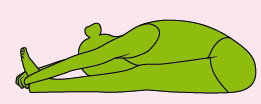YOGA ASANAS :
“FORWARD BENDS” FAMILY
In the “ForwardBends” family,
each of the six Asanas is featured using the same design
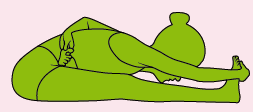
Ardha Baddha Padma Paśchimõttānāsana
# 61, plates 135, page 153 ( «Light on Yoga» BKS. Iyengar. Aquarian/Thorsons. Harper Collins India. Schocken books, New York ).
# 32, plates 65/67, page 73 (« The illustrated light on Yoga » BKS Iyengar. Aquarian/Thorsons & Harper Collins India ).
# 17, plate 27, page 144 ( «Yoga, a gem for women», Geeta S Iyengar. Allied publishers, India ).
Ardha : Half
Baddha : Caught
Padma : Lotus
Paschimottānāsana : Stretching of the back of the body.
Paschima : West ( as opposed to Pūrva, east ). We are here in symbolic cardinal directions : Since the sun rises in the east, the front of the body is referred to as «east», and back as «west». Traditionnal churches were built so that the crowd would face east, hence the expression «orientated».
Ut : Means intensity, a strong intention.
Tān : To stretch.
Uttānāsana : To stretch intensely, presently downward while standing.
You will meet Ut/Uttānāsana in : Utthita trikoṇāsana & Pārśvakoṇāsana, Pārśvōttānāsana, Paschimottānāsana, Pūrvottānāsana…
This is called an elision: The last syllab of a word desappears when placed before the first syllab of the next word. Thus Paschima (the west) – Uttānāsana becomes Paschimottānāsana etc…
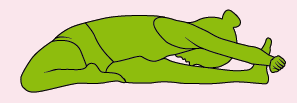
Jānu Śirṣāsana
# 59, plates 126/129, page 148 ( «Light on Yoga» BKS. Iyengar. Aquarian/Thorsons. Harper Collins India. Schocken books, New York ).
# 31, plates 62/63, page 72 (« The illustrated light on Yoga » BKS Iyengar. Aquarian/Thorsons & Harper Collins India ).
# 16, plate 26, page 142 ( «Yoga, a gem for women», Geeta S Iyengar. Allied publishers, India ).
Jānu : Knee
Śirṣa : Head
Jānu Śirṣāsana is often translated as « Head to knee «, but this does not make much sense since the head can extend much further than the knee.
A more interesting translation would be that the head of the posture
stands in the bent knee.
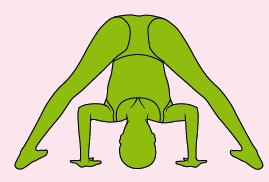
Prasārita pādottānāsana
# 13, plates 29/36, page 81 ( «Light on Yoga» BKS. Iyengar. Aquarian/Thorsons. Harper Collins India. Schocken books, New York).
# 7, plates 15/18, page 48 (« The illustrated light on Yoga » BKS Iyengar. Aquarian/Thorsons & Harper Collins India ).
# 11, plate 18, page 135 ( «Yoga, a gem for women», Geeta S Iyengar. Allied publishers, India ).
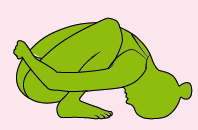
Mālāsana
# 117, plates 317/322 , page 62 ( «Light on Yoga» BKS. Iyengar. Aquarian/Thorsons. Harper Collins India. Schocken books, New York ).
# 28, plate 45/47, page 171 ( «Yoga, a gem for women», Geeta S Iyengar. Allied publishers, India ).
MALA : Garland
Paśchimõttānāsana
# 67, plates 153/161, page 166 ( «Light on Yoga» BKS. Iyengar. Aquarian/Thorsons. Harper Collins India. Schocken books, New York).
# 36, plates 75/81, page 79 (« The illustrated light on Yoga » BKS Iyengar. Aquarian/Thorsons & Harper Collins India ).
# 20, plates 30/31, page 149 ( «Yoga, a gem for women», Geeta S Iyengar. Allied publishers, India ).
Paschimottānāsana : Stretching of the back ( west ) of the body.
Paschima – Uttānāsana
Also called Ugrasana or Brahmacharyasana.
Ugra means formidable, powerful and noble.
Brahmacharya means religious study, self-restraint and celibacy.
Paschima : West ( as opposed to Pūrva, east ). We are here in symbolic cardinal directions : Since the sun rises in the east, the front of the body is referred to as «east», and back as «west». Traditionnally churches are built so that worshippers face east, hence the expression «orientated».
East/Poorva is the front of the body.
North is the crown of the head.
South is sole of the feet.
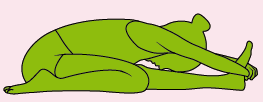
Triaṅga Mukhaikapada Paśchimõttānāsana
# 62, plates 138/139, page 156 ( «Light on Yoga» BKS. Iyengar. Aquarian/Thorsons. Harper Collins India. Schocken books, New York).
# 33, plates 68/69, page 75 (« The illustrated light on Yoga » BKS Iyengar. Aquarian/Thorsons & Harper Collins India ).
# 18, plate 28, page 145 ( «Yoga, a gem for women», Geeta S Iyengar. Allied publishers, India ).
Triaṅghā : Tri is three
aṅgā is limb. ( See Chaturaṅga Daṇḍāsana ).
# 29 Plates 66/67 («Light on Yoga» BKS. Iyengar. Harper Collins India ).
Aṅga : Member, part, body. This word can be found in Aṣṭānga Yoga, Chaturaṅga Daṇḍāsana, Pādānguṣṭhāsana, Sālamba Sarvāngāsana…
Baddha : Caught
Padma : Lotus
Paschimottānāsana : Stretching of the back of the body.
Paschima : West ( as opposed to Pūrva, east ).
We are here in symbolic cardinal directions :
Since the sun rises in the east, the front of the body is referred to as «east»,
and back as «west». Traditionnal churches were built so that the crowd
would face east, hence the expression «orientated».

